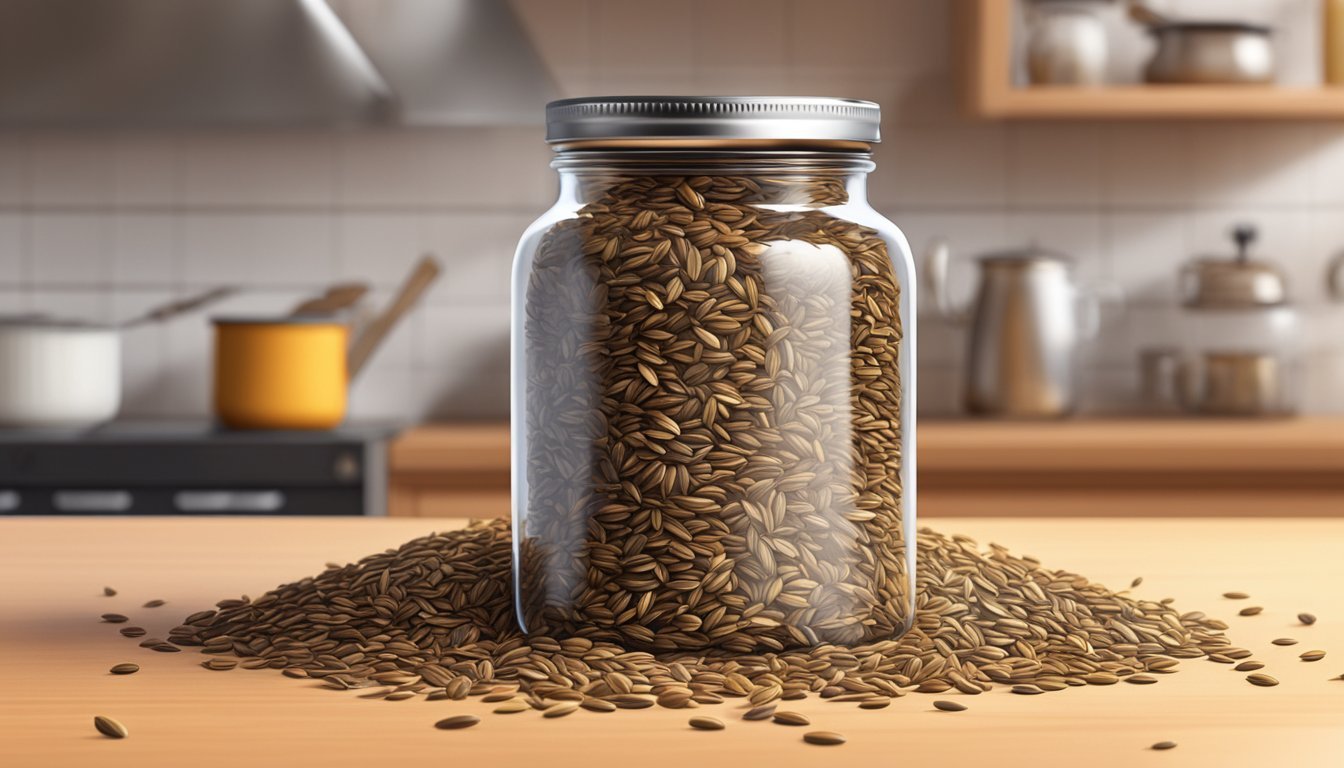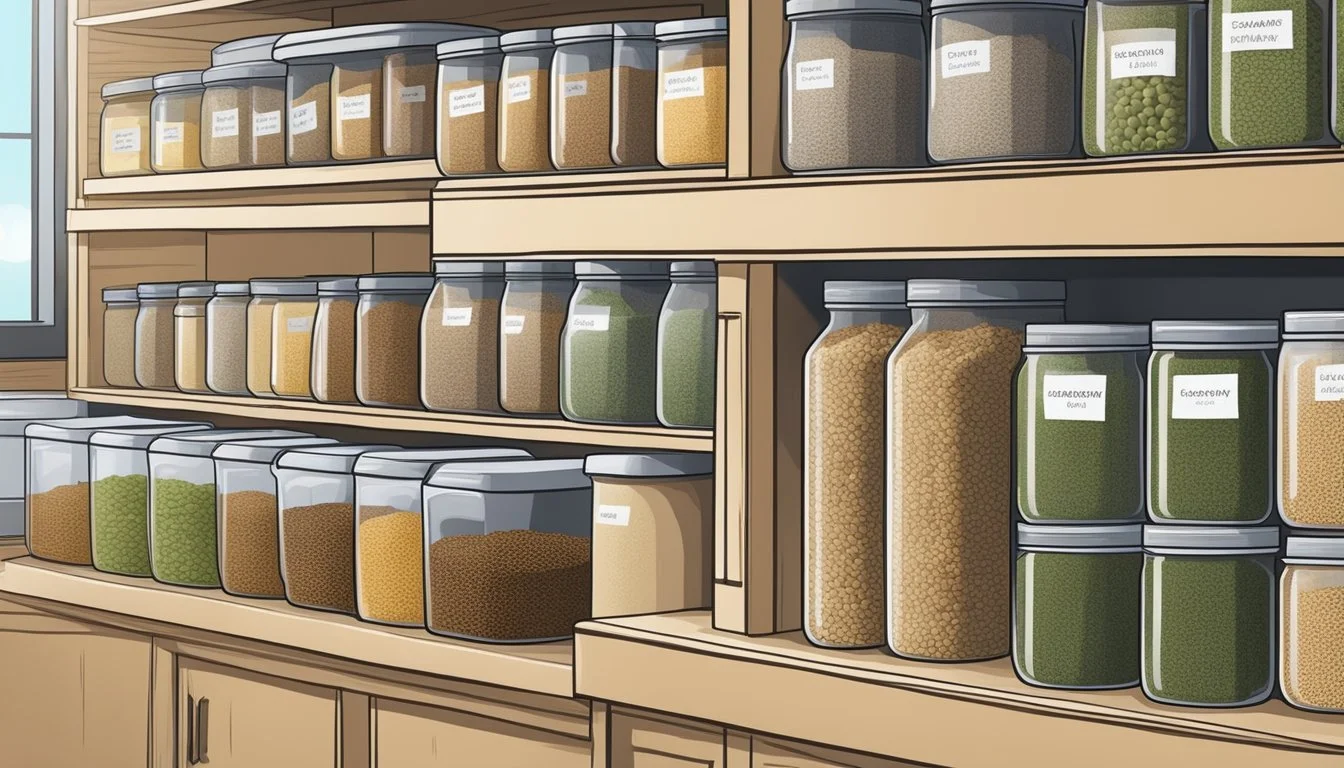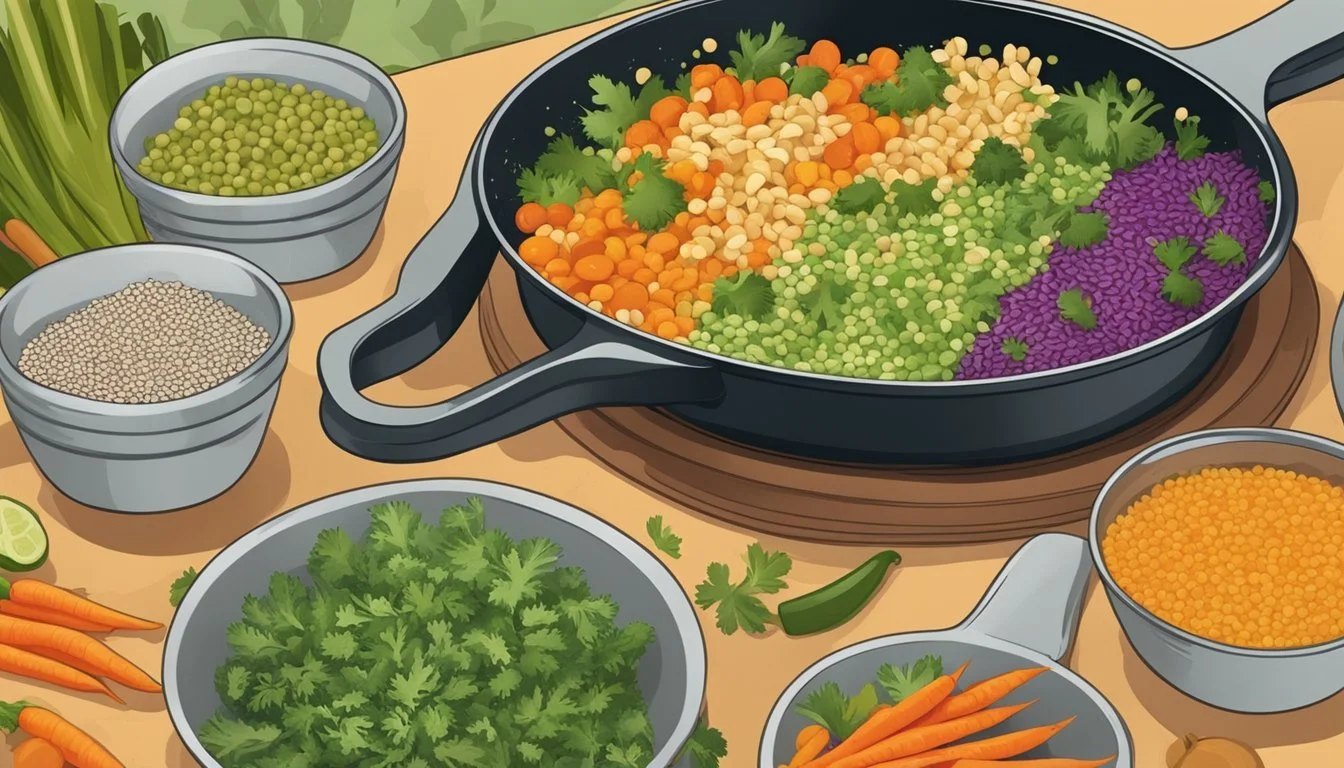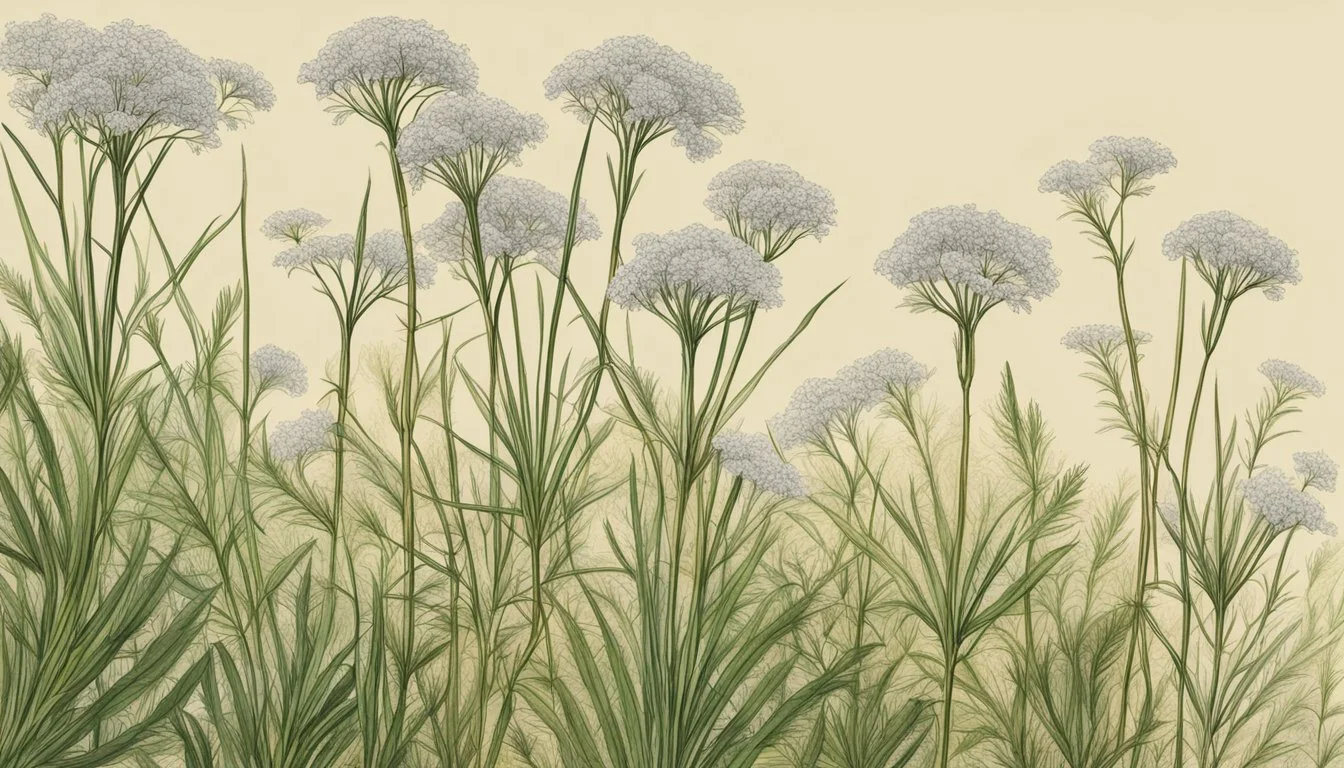Do Caraway Seeds Go Bad?
Shelf Life and Storage Tips
Caraway seeds, a staple in many kitchens, are cherished for their distinct flavor and versatility in various dishes. While they are known for their long shelf life, caraway seeds can go bad if not stored properly. To ensure they maintain their quality, it's vital to keep them in a cool, dark place, ideally in an airtight container to protect them from moisture and light.
When it comes to their longevity, caraway seeds, if stored under optimal conditions, can retain their best quality for about 3 to 4 years. The key indicators that caraway seeds have spoiled include a rancid smell, a noticeable change in their color, and a significant loss of taste. Proper storage significantly influences their shelf life and quality.
Highlighting the importance of storage underscores how these seeds can be a durable addition to your pantry. Enthusiasts and casual users alike will appreciate that with minimal effort, caraway seeds can stay fresh, aiding in their culinary endeavors for years.
Understanding Caraway Seeds
Caraway seeds are a versatile spice known for their distinct flavor and numerous culinary and medicinal applications. They are commonly used in various cuisines and offer a range of health benefits due to their nutrient content.
Origin and Culinary Uses
Caraway seeds, originating from Europe, North Africa, and Western Asia, have a long history in cooking and traditional medicine. They are a staple in many European dishes, most notably in German rye bread, where their warm and slightly peppery flavor adds a unique taste.
In addition to bread, caraway seeds are used in stews, sauerkraut, and pickling recipes. Their robust flavor complements both savory and sweet dishes, making them a popular spice in various recipes.
Nutritional Profile
Caraway seeds are packed with nutrients that contribute to their health benefits. They are relatively low in calories but rich in essential nutrients such as iron, magnesium, and fiber.
Nutrient Table:
Nutrient Amount per 100g Calories 333 Protein 19.77g Fat 14.59g Carbohydrates 49.9g Fiber 38g Iron 16.23mg
They also contain antioxidants that help reduce oxidative stress in the body. The high fiber content contributes to digestive health, while the iron supports blood formation.
Comparison With Similar Spices
Caraway seeds are often compared to fennel, cumin, and anise seeds due to their similar appearance and uses in cooking. However, each spice has a distinct flavor profile that sets it apart.
Fennel Seeds: Sweeter and more aromatic, often used in Mediterranean cuisine and sweets.
Cumin Seeds: Earthy and slightly bitter, a staple in Indian and Middle Eastern dishes.
Anise Seeds: Licorice-like sweetness, used in baking and liqueurs.
While they all share some commonalities, caraway seeds have a unique taste that is both warm and versatile, making them ideal for a range of culinary applications.
Proper Storage of Caraway Seeds
Caraway seeds can maintain their quality and usability for an extended period if stored correctly. This section details the optimal storage conditions and signs indicating the seeds are no longer good to use.
Optimal Storage Conditions
Caraway seeds should be kept in airtight containers to protect them from moisture and air exposure, which can lead to spoilage. Glass jars or plastic containers with tight-fitting lids are ideal.
Store the container in a cool, dry, and dark place. A pantry or dark cupboard away from direct heat and sunlight works best, as excessive light and temperature fluctuations can degrade the seeds' flavor and aroma. It is unnecessary to refrigerate or freeze caraway seeds for short-to-medium-term storage, but doing so can extend their shelf life even further.
Duration and Signs of Spoilage
Whole caraway seeds typically last up to 3 to 4 years when stored properly. Ground caraway seeds, however, have a shorter shelf life of about 1 to 2 years due to increased surface area and exposure to air.
Signs that caraway seeds are spoiling include changes in color, an off-putting odor, or the presence of mold. If the seeds develop a stale or rancid smell, they should be discarded immediately. Additionally, any visible mold or dark spots are clear indicators that the seeds have gone bad and should not be used.
Using Caraway Seeds in Cooking
Caraway seeds are a versatile spice that can be used to enhance a variety of dishes with their distinctive flavor and aroma. Their unique taste profile makes them suitable for several recipes and pairings.
Enhancing Flavors and Aromas
Caraway seeds add a sweet, earthy note to dishes, making them a popular ingredient in savory recipes. To get the most out of caraway seeds, it is advisable to toast them lightly before use, which helps to release their volatile oils and intensify their flavor.
Crushing the seeds, rather than grinding, can further enhance their aromatic properties. Add the seeds to meats, such as pork or beef, to infuse a rich, warm taste. They also complement vegetables like carrots and cabbage, lending a subtle complexity to the dish.
Recipes and Pairings
Caraway seeds are commonly used in breads like Irish soda bread, providing a distinct peppery and aniseed undertone that pairs well with the bread's simplicity.
They are also an essential ingredient in certain soups and stews, particularly those from European cuisine. Their flavor profile perfectly complements hearty soups and dishes featuring sauerkraut or other fermented vegetables.
Incorporate caraway seeds into dressings and sauces to add depth and a hint of spice. They can also be used in rubs for roasting meat, enhancing the natural flavors of the protein. Experimenting with caraway in your recipes can introduce a new layer of taste that is both traditional and refreshingly different.
Substitutes for Caraway Seeds
When caraway seeds are unavailable, several other spices can mimic their unique flavor. These substitutes include fennel seeds, anise seeds, and cumin, among others. Each brings its own nuances to dishes.
Choosing the Right Substitute
Fennel Seeds
Fennel seeds are an excellent replacement for caraway seeds. They have a mild licorice flavor and are aromatic. This makes them perfect for recipes where the warm, sweet taste of caraway is desired. Their flavor is warmer and sweeter, suitable for both savory and sweet dishes. They belong to the carrot family, enhancing stews, soups, and breads.
Anise Seeds
Anise seeds also share a licorice-like flavor. These are slightly stronger, so use them sparingly. A 1:2 ratio substitution (1 teaspoon of anise seeds for 2 teaspoons of caraway) keeps the flavor balanced. Ideal for baked goods and certain liquors, anise seeds add a striking aroma. Their flavor profile enhances Mediterranean and Middle Eastern cuisine.
Cumin
Cumin has a distinct yet complementary taste. It offers a warm, earthy, and slightly citrusy flavor. While not an exact match, cumin works well in stews, curries, and sauces. The peppery scent and nutty notes make it versatile. It is especially useful in Latin and Indian dishes, making it a good all-around substitute.
Coriander Seeds
For those who want a more neutral flavor, coriander seeds are an appropriate choice. They are earthy and slightly citrusy when ground. Coriander can provide subtle heat similar to caraway. They work particularly well in bread and savory recipes, adding complexity without overwhelming other flavors.
Juniper Berries
Juniper berries offer a unique alternative with their fresh, citrus notes. They introduce a spiciness to the dish, making them suitable for recipes requiring a bold flavor. They can replace caraway seeds in meat dishes, adding a distinctive taste that pairs well with game meats and hearty stews.
Nutmeg and Cinnamon
Ground cloves, nutmeg, or cinnamon can be used in smaller quantities. These spices are potent, so a quarter of the intended measurement suffices. They are suitable for sweet applications and certain savory dishes, providing warmth and depth of flavor. Use them in baking to replicate the subtle spice of caraway seeds.
Health Benefits and Medicinal Uses
Caraway seeds are celebrated for their numerous health benefits and medicinal uses.
They are particularly beneficial for digestion. Caraway seeds can help relieve bloating, gas, and heartburn. They promote healthy digestion and can ease gastrointestinal discomfort.
Rich in fiber, antioxidants, and several important micronutrients like iron, magnesium, phosphorus, and zinc, caraway seeds support overall health.
In skin care, caraway essential oil is used for steam facials. The high concentration of antioxidants helps reduce the appearance of wrinkles and maintains skin elasticity.
Nutritional Information:
Nutrient Amount per 1 tsp (2 grams) Calories 7 Protein Less than 1 gram Fat Less than 1 gram Carbohydrates 1 gram Fiber Less than 1 gram
Caraway seeds can also be applied in medicinal forms like capsules, essential oils, and extracts. Each form has specific applications, such as ingesting seeds for digestive support or using diluted oil formulations for skin conditions.
Used traditionally for centuries, caraway seeds have carved a niche in both culinary and medicinal realms, making them a versatile ingredient in everyday health practices.
Growing and Harvesting Caraway
Caraway (Carum carvi), belonging to the Apiaceae family, is a biennial plant known for its aromatic seeds.
Growing Caraway
For optimal growth, plant caraway seeds in a sunny spot with well-drained, loamy soil. Ideal soil pH ranges between 6.0 to 7.0.
Planting Depth and Space:
Sow seeds ¼ inch deep.
Space plants 8 inches apart.
Thin seedlings to 12-18 inches apart once they are 4 inches tall.
Space rows 18-24 inches apart.
Harvesting Caraway
Caraway typically reaches harvest maturity in the second year. The umbels, or flowering heads, are crucial for seed collection.
Steps for Harvesting:
Cut Umbels: Harvest umbels when seeds turn brown.
Dry: Place umbels in paper bags with stems sticking up. Dry them in a cool, dry location.
Thresh: After 1-2 weeks, shake the bags to release seeds.
Clean: Use cardboard to fan away lighter chaff, and remove any remaining debris by hand.
Storage: Store seeds in airtight glass jars in a cool, dark place to maintain quality for up to four years.
Caraway cuttings can also be used to propagate the plant. Select a segment of new growth with at least three to four sets of true leaves. Insert into moist rooting medium, ensuring conditions for healthy establishment.
Growing and harvesting caraway ensures a supply of fresh, aromatic seeds with a host of culinary uses.
Purchasing and Replacing Caraway Seeds
When purchasing caraway seeds, look for their characteristic dark brown color and slightly crescent shape. Ensure they are from a reliable source to guarantee their best quality.
Optimal Storage:
Store caraway seeds in airtight containers with tight-fitting lids to maintain freshness. They should be kept in a cool, dark place, away from direct sunlight and moisture.
Purchased in Bulk:
If caraway seeds are purchased in bulk, transfer them immediately to airtight containers. This helps in preserving their flavor and potency for a longer period.
Expiration Date:
Check the expiration date on the package. Even with proper storage, caraway seeds will gradually lose potency.
Lose Potency:
Over time, caraway seeds will lose their potent flavor and aroma. If they smell weak or have lost their strong taste, it’s time to replace them.
Replacement Substitutes:
Several substitutes can stand in if you run out of caraway seeds:
Anise Seeds: Use a 1:2 ratio (1 tsp of anise seeds to 2 tsp of caraway).
Coriander Seeds: Ground coriander can mimic caraway’s earthy notes.
Fennel Seeds: Use a one-to-one ratio for similar licorice-like essence.
Cumin Seeds: While different in flavor, cumin adds a warm, nutty hint.









